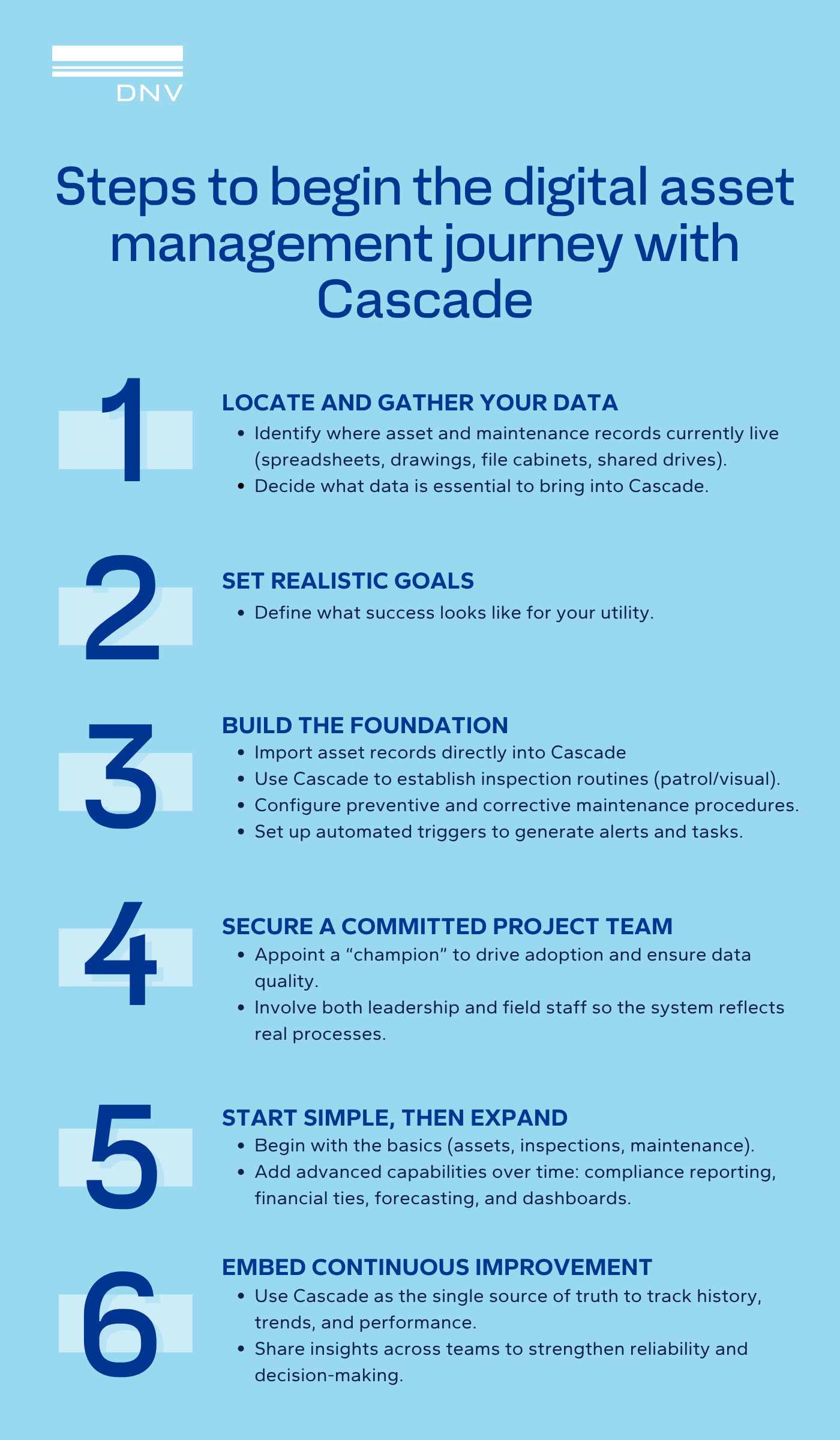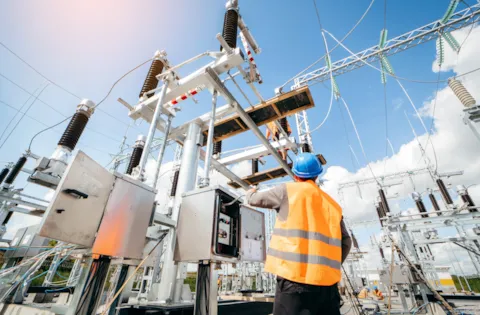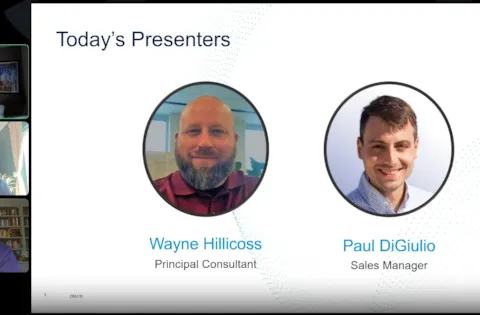Beyond spreadsheets: Modernizing substation management for small grids
For many small utilities and electric co-ops, managing substations has long meant juggling spreadsheets, shared folders, and even paper files. While these methods may get the job done, they also create silos of information, make it difficult to ensure accuracy, and limit the ability to plan effectively.
In today’s energy landscape—where reliability, compliance, and efficiency are under greater scrutiny, more utilities are looking to modernize with digital asset management systems. But where do you start?
From scattered data to a single source of truth
As Wayne Hillicoss, a former electric utility maintenance manager and current Principal Consultant at DNV put it, “Step one is always: know where your data is.” Many co-ops discover that equipment records are spread across spreadsheets, drawings, or even file cabinets. The first step toward modernization is consolidating this information into a single, centralized system.
Moving to a platform like Cascade enables utilities to establish one “system of truth,” where asset, inspection, and maintenance data live together. This not only eliminates duplication but also ensures consistency across teams.
Building the foundation: inspections, maintenance, and triggers
Successful implementations don’t happen overnight. Instead, utilities start with the basics:
- Importing asset data into the system
- Setting up patrol and visual inspections
- Defining preventive and corrective maintenance procedures
- Automating triggers that generate alerts and drive actions
These foundational steps provide immediate benefits by streamlining processes and reducing the risk of missed inspections or reactive fixes.
The people side of digital transformation
Technology alone won’t deliver success — it’s the people behind it who make transformation stick. A successful implementation starts with a committed project team and a strong internal champion who can drive change, maintain momentum, and ensure data quality as new systems take root. This “champion” might be an executive sponsor or someone in operations who takes ownership of the database and helps others adapt to new ways of working.
Transitioning from paper or spreadsheets to a digital asset management system isn’t just a technical project — it’s a cultural shift. Even when processes stay the same, the act of entering data into a new system and working toward a more data-driven, proactive way of working can feel like a big change. That’s why managing the human side is so important.
Unlocking long-term value
Once data is centralized, utilities gain powerful new capabilities. Forecasting becomes easier, enabling one-, five-, or even ten-year maintenance plans. Compliance reporting—whether for NERC, environmental requirements, or SF6 tracking—can be generated with a few clicks instead of hours of manual compilation.
With tools like Cascade Intelligence, utilities can also visualize performance data through Power BI dashboards, empowering data-driven decision making.
A future built on resilience and efficiency
Ultimately, the shift from spreadsheets to digital asset management is about more than efficiency. It’s about building resilient operations that can adapt to challenges such as aging infrastructure, new regulatory demands, and growing power needs from data centers and distributed generation.
By investing in a centralized system and embracing a culture of continuous improvement, small utilities position themselves to do more with less to deliver reliable, affordable electricity to the communities they serve.
10/28/2025 11:30:00 AM



